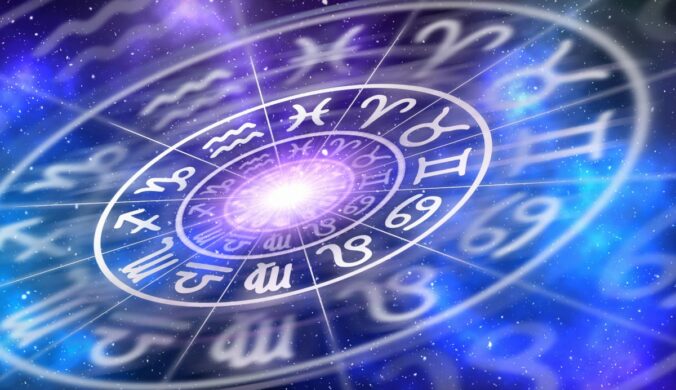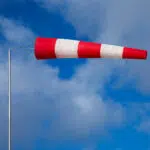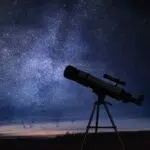Spring Astronomy Day falls on a Saturday between mid-April and mid-May, on or close to the first quarter Moon. This year, it takes place on May 7. It is one of the two semi-annual Astronomy Days in a year. The first Astronomy Day was celebrated in 1973 when the president of the Astronomical Association of Northern California, Doug Berger, established it by setting up telescopes in urban areas so that city-dwellers could enjoy views of space. The objective of the event is to participate in space-related activities. In 2007, a fall version of Astronomy day began.
History of Spring Astronomy Day
Humans have been looking to the heavens for several millennia now. Thus, it is not surprising that astronomy is one of the oldest natural sciences known to man. The discipline finds its roots in not just a rational, objective spirit of inquiry but also in religion, mythology, cosmology, and astrology, among other human practices. Early cultures identified celestial objects with deities and spirits. They related natural phenomena to divinity, looking to explain what was unexplainable otherwise. Every culture around the globe has had such beliefs — for example, the Greek “Zeus” ruled over the skies, the Egyptian “Ra” was the sun himself, and the Indian “Chandra dev” was the moon incarnate. The earliest astrologers were, thus, priests, and they looked at celestial bodies as divine — this view of astronomy is what constitutes the subject matter of astrology.
Babylonian astronomers saw the sky as a celestial sphere and organized stars into constellations. The ancient Greeks developed their belief system based on empirical evidence they collected from observing the movement of the stars. They propounded a geocentric model of the universe, in which a spherical Earth was stationary at the center of the universe. This model had wide acceptance in Western Civilizations for the next two millennia; only when Copernicus proposed a heliocentric (a solar system with the sun at the center) model did things change. Isaac Newton and Christian Huygens, among others, accepted this cosmology. Thinkers and philosophers like Kant, Wright, and Herschel ensured that the discipline of astronomy continued to evolve.
The modern era of physical cosmology, a branch of astronomy, began in 1917 when Einstein applied his general theory of relativity to the dynamics of the universe. Two later discoveries by Edwin Hubble further changed people’s perceptions of the universe. He first showed that the Andromeda galaxy was both separate from and similar to our own Milky Way galaxy. Subsequently, he discovered and proved the movement of distant galaxies away from one another as though the universe was expanding. Today, astronomy is an intersection between physics, chemistry, and meteorology; however, its goal is the same as that of the first priests who set out to map the heavens — ‘understanding the workings of the universe.’
Spring Astronomy Day timeline
The first known star chart gets carved on a mammoth’s tusk.
Aristarchus of Samos suggests a heliocentric system.
Indian astronomer Aryabhatiya proposes a computational system based on a planetary model.
Copernicus proposes a heliocentric system to oppose the prevalent belief in a geocentric system.
Einstein applies his general theory of relativity to the functioning of the universe.
Edwin Hubble recognizes Andromeda as a separate galaxy similar to the Milky Way and establishes that the universe is expanding.
Spring Astronomy Day FAQs
Why do we celebrate Astronomy Day?
Astronomy Day is a way for enthusiasts and professionals to share their knowledge and love for space.
What time is Blue Hour?
Blue hour usually happens 20 to 30 minutes after sunset and before sunrise.
What are the four types of astronomy?
The four major astronomy subfields are astrophysics, astrometry, astrogeology, and astrobiology.
Spring Astronomy Day Activities
Go stargazing
If you have access to a telescope, grab a few friends or family members and go out for a night of stargazing. It is sure to be a fun experience.
Visit a planetarium
If you love learning about the skies above, buy a ticket to your closest planetarium and visit. Prepare to enjoy an educational experience!
Watch a space documentary
If staying in is more your thing, turn on a documentary about space, sit back, and enjoy! You get to learn in a relaxed manner.
5 Interesting Facts About Space
Absolute silence
There is no medium for sound to travel in space; it’s dead silent.
Hottest planet
Venus, with an average surface temperature of 842°F, is the hottest planet in the solar system.
Sunset on Mars
The sunset on the ‘red planet’ appears blue.
Super earth
A planet dubbed “super-Earth” or “55 Cancri e” is made entirely of diamonds.
No solid surface
There is no single inch of solid surface on Jupiter, Saturn, Uranus, and Neptune.
Why We Love Spring Astronomy Day
We get to learn about space
Space is endlessly fascinating. Spring Astronomy Day is a perfect day to learn more about it.
It’s an opportunity to go star-gazing
We often don’t think of star-gazing in our always busy lives. Spring Astronomy Day is an opportunity to look at the skies above.
It’s a great way to spend time with your loved ones
Star-gazing is a fun group activity. Spring Astronomy Day is a great way to spend time with the people you love.
Spring Astronomy Day dates
| Year | Date | Day |
|---|---|---|
| 2024 | May 18 | Saturday |
| 2025 | May 3 | Saturday |
| 2026 | May 7 | Thursday |




















